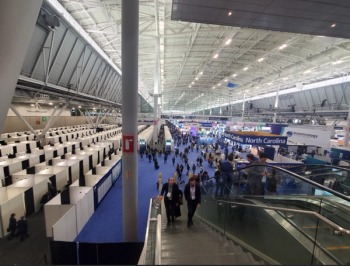
- BioPharm International-10-01-2004
- Volume 17
- Issue 10
Final Word: Riding on the Coattails of US Patients
In general, people in other countries pay less for brand-name prescription drugs than people in the US. As a result, some Americans travel to Canada or Mexico to get their prescriptions, and an increasing number are using the Internet to buy drugs from other countries.
In general, people in other countries pay less for brand-name prescription drugs than people in the US. As a result, some Americans travel to Canada or Mexico to get their prescriptions, and an increasing number are using the Internet to buy drugs from other countries.
Table 1. Purchasing Power Parity (PPP) and Average Patented Drug Prices (2001)
The primary reason people in other countries pay less for pharmaceuticals is that they have lower incomes than Americans. For example, in 2001, US per-capita GDP was $35,045, compared to $22,343 in Canada and $6,227 in Mexico. Companies often compensate for lower incomes in other countries by charging lower prices, a practice known as "differential pricing." Differential pricing is well accepted by economists and widely practiced by businesses because it is the most efficient way to ensure that people with varying incomes have access to products and services at prices they can afford.
The question isn't whether people in other countries pay less for prescription drugs than Americans. They do and they should. The real question is whether the discounts in those countries are equivalent to their purchasing power. They aren't.
The Organization for Economic Co-operation and Development (OECD) produces a "purchasing power parity" (PPP) index for the major industrialized countries. According to the US Census Bureau, "PPPs show how many units of currency are needed in one country to buy the same amount of goods and services which one unit of currency will buy in the other country." Although the comparisons aren't perfect, PPPs are the best tool we have to understand price differences while compensating for variations in income, currency exchange, and other economic factors.
In 2001, Canada's PPP was about 83% of the US PPP — for the same basket of goods and services, Canadian consumers spent 83% of what US consumers paid, reflecting Canada's lower average income. However, in 2001 Canadians paid, on average, about 60% of what US consumers paid for brand-name (in other words, patented) prescription drugs, according to the Canadian government's Patented Medicines Prices Review Board.
The board found that price-controlled healthcare systems are pushing drug prices down toward their marginal cost — the cost to produce one more unit — and that the US is paying the lion's share of R&D.
That has to change. The US cannot be expected to bear the cost burden of all pharmaceutical innovation. And if Congress passes legislation allowing US consumers to buy price-controlled prescription drugs from other countries, no one will pay for R&D.
If other countries want to reinvigorate their R&D sectors, they must relax price controls and allow prices to rise. They will likely find that innovation-driven companies settle — or in some cases resettle — in those countries, pumping up their economies and creating good jobs.
Articles in this issue
about 21 years ago
Editorial—Where's the Money?about 21 years ago
StreetTalk: Corporate Wellness Programsabout 21 years ago
Gastric-State-Controlled Bioequivalence Studiesabout 21 years ago
Regulatory Beat: Pharmacogenomics Discoveries Shape Biotech R&Dabout 21 years ago
Biotech Industry Finds Fertile Ground in the Netherlandsabout 21 years ago
Supply Chain Cycle Time Reductionabout 21 years ago
Manufacturing Vaccines for the Developing WorldNewsletter
Stay at the forefront of biopharmaceutical innovation—subscribe to BioPharm International for expert insights on drug development, manufacturing, compliance, and more.




